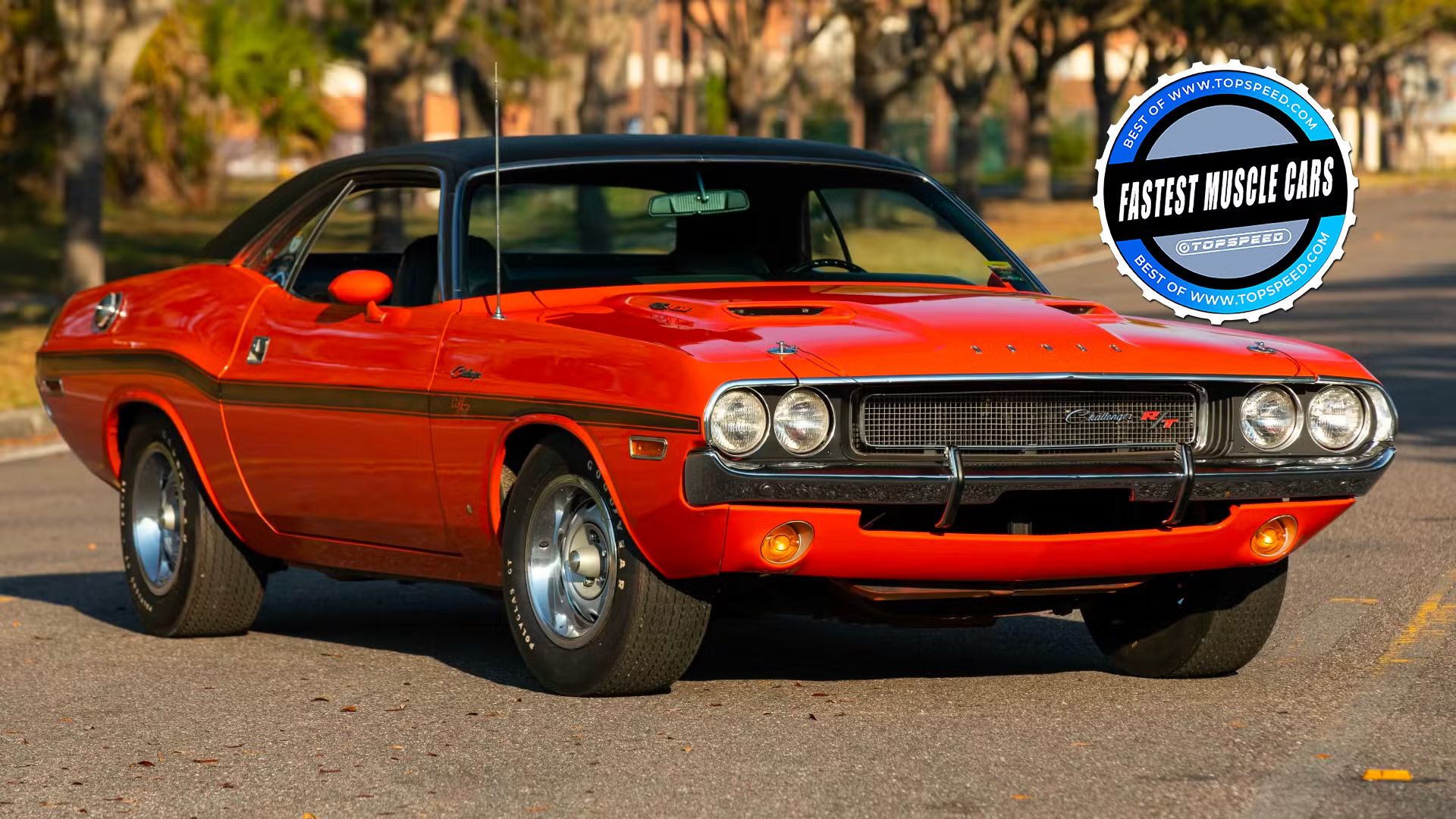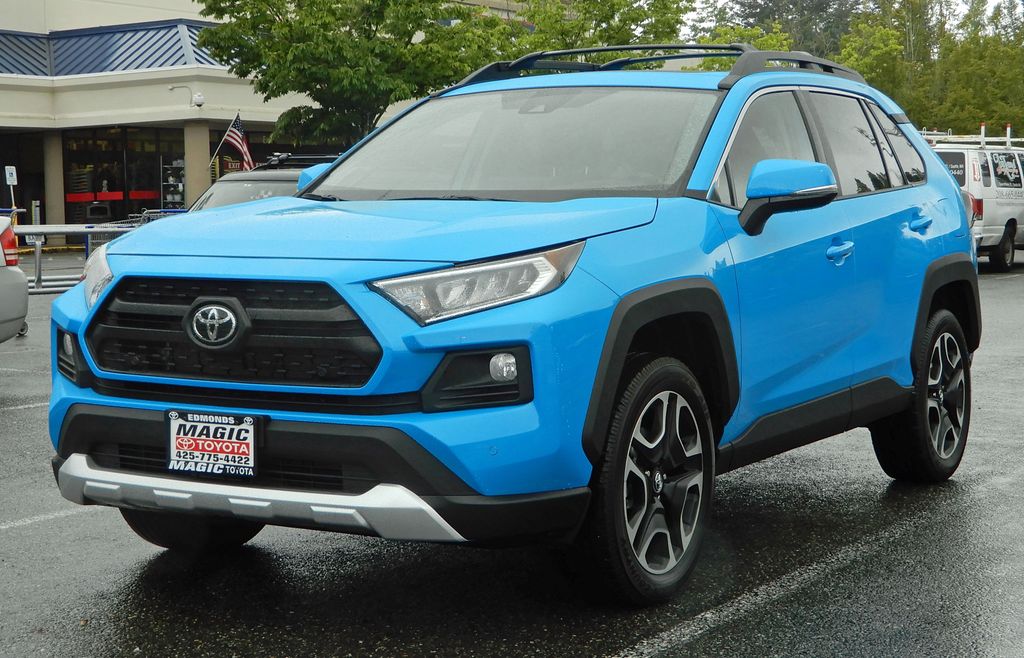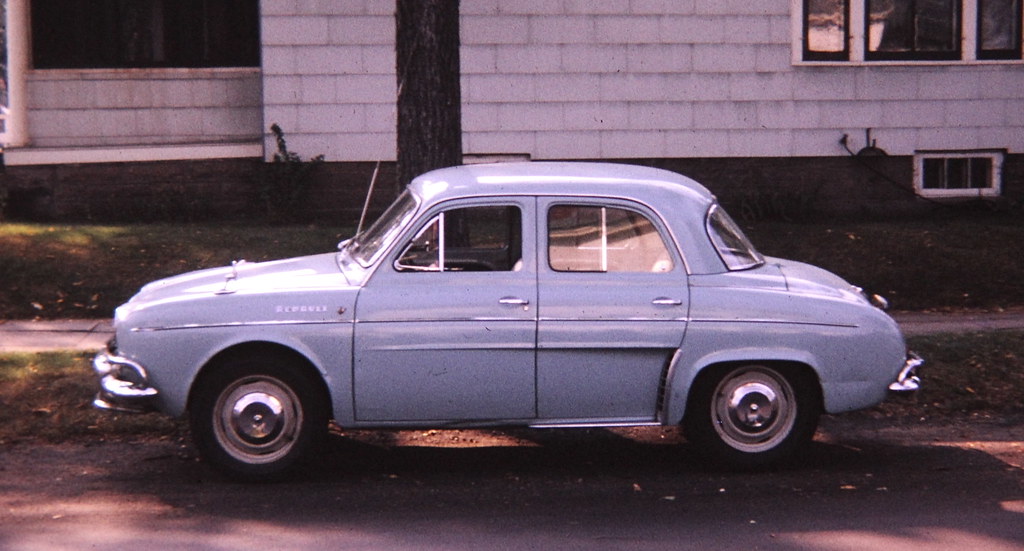
The car market is a labyrinth of promises and pitfalls, where not every vehicle lives up to the glossy brochures or initial hype. While some cars excel, offering reliability and joy, others leave owners with regret, often tied to issues apparent only after purchase. This is particularly true for crucial factors like fuel economy and the hidden costs of ownership, making an informed decision paramount. Sometimes, initial attraction can lead to a long-term financial drain and a frustrating ownership experience.
It’s disheartening when the excitement of a new car purchase gives way to buyer’s remorse, especially after spending tens of thousands of dollars or committing to a multi-year loan. Making a decision based solely on outward aesthetics or advertised specifications can lead to trouble. Learning from other vehicle owners’ mistakes is an effective way to make better choices and avoid similar predicaments. Understanding where vehicles fall short in real-world conditions, whether through poor fuel efficiency, persistent mechanical problems, or unexpected repair bills, is key to avoiding an expensive mistake.
In this in-depth guide, we’ll shine an objective light on vehicles that, despite initial appeal or brand prestige, have frequently disappointed owners. We’ll delve into why these models often fail to meet expectations, leaving drivers wishing they could simply “unbuy” their purchase. Our focus will be on fuel economy, reliability, and the true cost of ownership, providing practical insights to help you navigate the complex automotive landscape and make a smarter choice.

1. **Chevrolet Tahoe: A Gas-Guzzling Goliath**
The Chevrolet Tahoe stands as a quintessential representation of American automotive brawn, boasting considerable interior space, undeniable power, and an imposing road presence. It draws buyers with its promise of robust capability and a commanding view. However, for many owners, the real-world performance often tells a starkly different story, particularly concerning its fuel efficiency, which frequently falls short and significantly contributes to high ownership costs.
Owners consistently report dismal fuel economy figures, frequently hovering around a mere 14-15 miles per gallon in city driving conditions. This consumption rate is particularly frustrating given the Tahoe’s steep starting price, beginning at over $60,495. For a vehicle often purchased as a family hauler, such poor efficiency quickly erodes any perceived value, turning routine trips to the gas pump into painful financial reminders. The sheer size and power come at a substantial and continuously accumulating cost.
Beyond the significant fuel consumption, other aspects of the Tahoe have drawn criticism. Interior controls, despite the vehicle’s premium pricing tier, often feel clunky and lack the refinement expected in this segment. As buyers opt for higher trim levels, the cost quickly pushes the vehicle into luxury territory, yet it often fails to deliver a truly premium experience in terms of material quality or overall build sophistication. This discrepancy between price and perceived value leaves many owners questioning their substantial investment.
While the 2025 model has improved drivability and retains its strong V-8 engine, the overall value proposition of earlier models remains questionable. Those initially attracted by its size and iconic nameplate often regret the ownership experience due to the combination of poor efficiency and an underwhelming return on a hefty investment. Ultimately, the Tahoe’s imposing size alone isn’t enough to justify the substantial financial downsides, making it a frequent candidate for buyer’s remorse.
Car Model Information: 2021 Chevrolet Tahoe 4WD RST
Name: Chevrolet Tahoe,GMC Yukon
Manufacturer: General Motors
Production: 1991–present (Yukon),1994–present (Tahoe)
Class: Full-size SUV
Related: Cadillac Escalade,Chevrolet Suburban,Chevrolet Silverado,Hummer H2
Layout: Front-engine, rear-wheel-drive layout
Predecessor: Chevrolet K5 Blazer
Caption: 2022 Chevrolet Tahoe RST (fifth generation)
Categories: 2000s cars, 2010s cars, 2020s cars, All-wheel-drive vehicles, All articles with unsourced statements
Summary: The Chevrolet Tahoe () is a line of full-size SUVs from Chevrolet marketed since the 1995 model year. Marketed alongside the GMC Yukon for its entire production, the Tahoe is the successor of the Chevrolet K5 Blazer; the Yukon has replaced the full-sized GMC Jimmy. Both trucks derive their nameplates from western North America, with Chevrolet referring to Lake Tahoe; GMC, the Canadian Yukon.
Initially produced as a three-door SUV wagon, a five-door wagon body was introduced for 1995, ultimately replacing the three-door body entirely. The five-door wagon shares its body with the Chevrolet and GMC Suburban (today, GMC Yukon XL) as a shorter-wheelbase variant. Since 1998, the Tahoe has served as the basis of the standard-wheelbase GMC Yukon Denali and Cadillac Escalade luxury SUVs. The Tahoe is sold in North America, parts of Asia such as the Philippines, and the Middle East, plus other countries including Bolivia, Chile, Peru, Colombia, Ecuador, and Angola as a left-hand-drive vehicle. The Yukon is only sold in North America and the Middle East.
The Tahoe has regularly been the best-selling full-size SUV in the United States, frequently outselling its competition by two to one.
Get more information about: Chevrolet Tahoe
Buying a high-performing used car >>>
Brand: Chevrolet Model: Tahoe
Price: $59,998 Mileage: 33,720 mi.
Read more about: 15 Trucks Owners Wish They Never Bought: Unpacking the Crippling Costs and Regrets

2. **Mercedes-Benz C-Class: Luxury, but at a Cost**
Mercedes-Benz has cultivated a global reputation as a symbol of luxury, sophistication, and engineering excellence. The C-Class, with its refined styling and upscale interior, ostensibly continues this tradition, presenting an attractive facade that promises a premium driving experience. However, beneath this polished exterior, many owners have discovered a suite of persistent reliability issues that quickly diminish the allure of the prestigious badge.
Drivers of the C-Class frequently encounter electronic failures, manifesting in various frustrating ways. Common complaints include infotainment system malfunctions, rendering navigation or audio controls unresponsive, and faulty sensors that trigger warning lights. These persistent electrical gremlins not only disrupt the driving experience but also chip away at the confidence owners place in a brand synonymous with quality and precision.
The financial sting associated with C-Class ownership is another significant factor leading to regret. Repair bills for these prevalent issues average around $900 annually, a substantial sum that adds a considerable burden to the cost of maintaining the vehicle. This recurring expenditure often overshadows the initial joy of owning a luxury car, transforming the dream of Mercedes ownership into a costly and frustrating reality. Owners find themselves spending more time at the service center than enjoying the open road.
Despite its undeniable prestige and luxurious appointments, the C-Class doesn’t always deliver the premium dependability that buyers rightfully expect at its elevated price point. This gap between expectation and reality leads many to second-guess their purchase decision. While the C-Class may look the part of a high-end luxury sedan, its reliability record often suggests a trade-off, leaving owners to question if the brand cachet is truly worth the ongoing financial and logistical headaches.
Read more about: Engine of Regret: 14 Car Models That Left Owners Begging for a Trade-In – A Data-Driven Warning
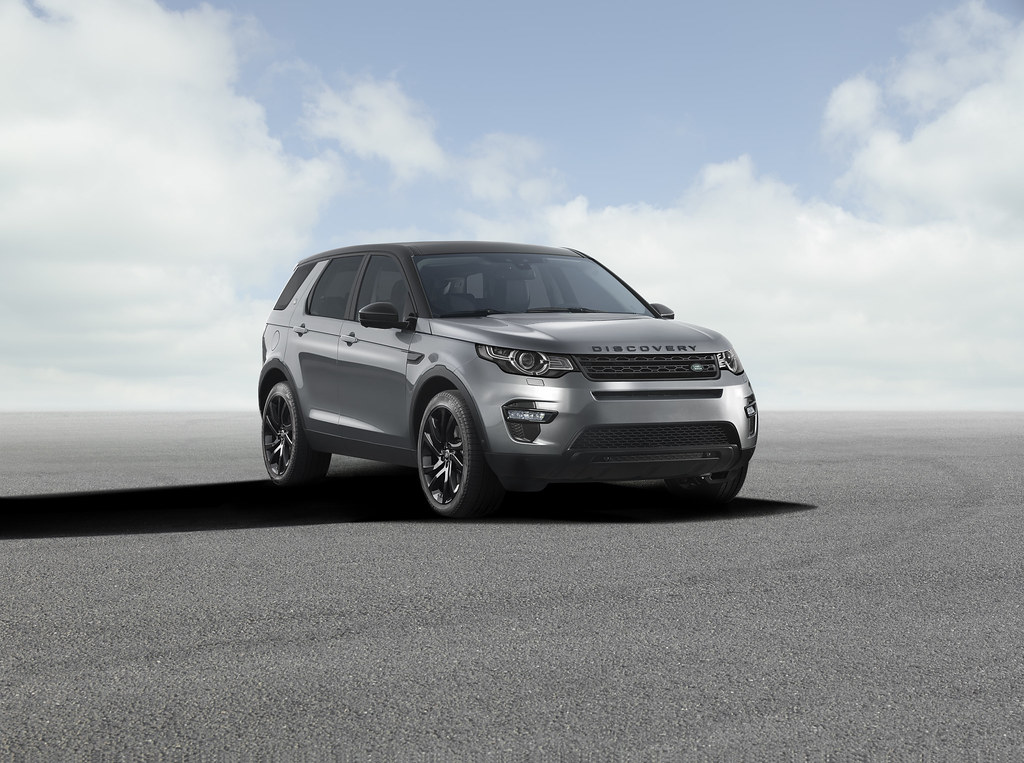
3. **Land Rover Discovery Sport: Promises Not Delivered**
The Land Rover Discovery Sport is marketed with an appealing duality: a go-anywhere luxury SUV that combines rugged capability with refined comfort. This promise of adventure intertwined with upscale living is a powerful draw for many buyers. Yet, for a significant number of owners, the reality of the ownership experience has been a consistent source of disappointment, failing to live up to the adventurous marketing pitch.
One of the most concerning issues plaguing the Discovery Sport is its transmission, with reports of problems surfacing well before the 60,000-mile mark. These transmission woes can range from rough shifting to complete failure, significantly impacting the vehicle’s drivability and reliability. Such a fundamental mechanical flaw in a relatively new vehicle is a serious red flag, undermining the trust owners place in its supposed durability and performance.
Compounding these mechanical issues are persistent electrical system flaws, which consistently drag down the Discovery Sport’s reliability ratings. These problems can lead to unexpected breakdowns and expensive repairs, further souring the ownership experience. When repairs become necessary, owners often face lengthy delays due to slow parts availability, meaning their “adventurous SUV” spends more time languishing in the workshop than out on the trails.
While the Discovery Sport certainly boasts a refined appearance and an aura of off-road readiness, its actual performance and durability frequently fall short of these marketing claims. Many owners express profound regret over choosing this vehicle, especially when they realize their investment in a seemingly capable SUV translates into frequent service visits and unexpected downtime. The allure of luxury and adventure quickly dissipates when faced with consistent mechanical and electrical unreliability.
Car Model Information: 2024 RAM 2500 Big Horn
Name: Land Rover Discovery Sport
Manufacturer: Jaguar Land Rover
Production: 2014–present
ModelCode: L550
Assembly: Jaguar Land Rover Halewood,Changshu,Itatiaia,Pune
Designer: Gerry McGovern
Platform: Jaguar Land Rover car platforms#D8
Related: Range Rover Evoque,Jaguar E-Pace,Tata Harrier
Engine: ubl
Motor: ubl
Transmission: ubl
Wheelbase: Convert
Length: Convert
Width: Convert
Height: Convert
Weight: Convert
Sp: uk
Class: Compact crossover SUV#Luxury vehicles
BodyStyle: SUV
Layout: unbulleted list
Predecessor: Land Rover Freelander
Categories: 2020s cars, All-wheel-drive vehicles, All Wikipedia articles written in British English, Articles with short description, CS1: unfit URL
Summary: The Land Rover Discovery Sport (internal code L550) is a compact luxury crossover SUV produced by British automotive company Jaguar Land Rover since 2014, under their Land Rover marque, and since 2017 their best-selling model.
Introduced in late 2014, it replaces the Freelander in a revised Land Rover range of vehicles, with Discovery joining Range Rover as a sub-brand. Contrary to its predecessor, the slightly larger car is also available in a seven seat layout.
The pre-facelift Discovery Sport is based on the JLR D8/LR-MS platform, customised for off-road applications, and is powered by a range of four cylinder petrol and diesel engines. It is the first Discovery built with a unibody structure.
Land Rover described the facelifted Discovery Sport as being based on the JLR PTA platform, a rebrand of the D8. It is also used by the Jaguar E-Pace and L551 version of Range Rover Evoque.
Get more information about: Land Rover Discovery Sport
Buying a high-performing used car >>>
Brand: Land Rover Model: Discovery Sport
Price: $46,895 Mileage: 37,555 mi.
Read more about: 15 Trucks Owners Wish They Never Bought: Unpacking the Crippling Costs and Regrets
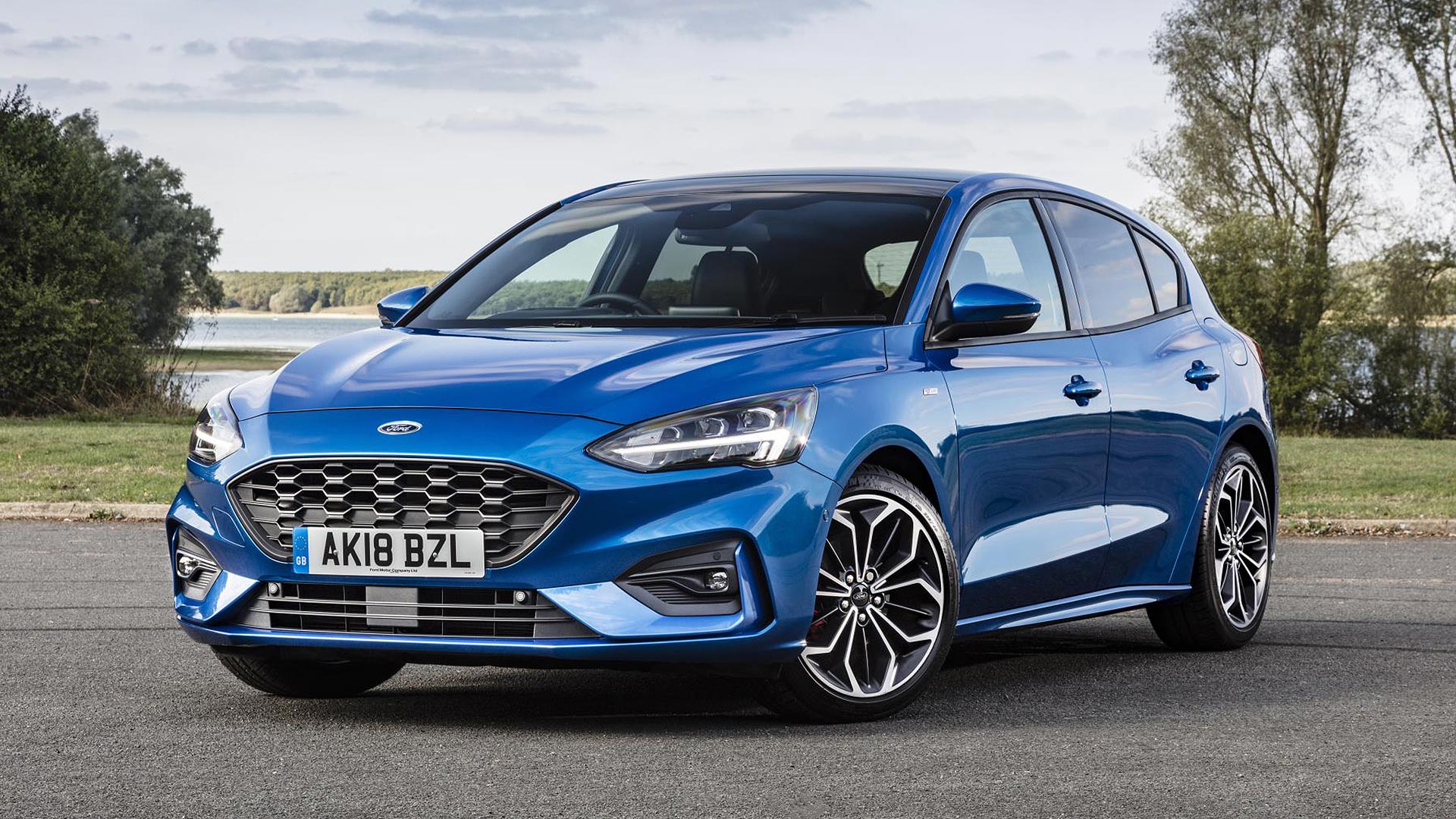
4. **Ford Bronco: Excitement That Fell Flat**
The return of the Ford Bronco generated unprecedented anticipation and excitement among automotive enthusiasts. With its iconic retro design and a clear emphasis on off-road prowess, it was hailed as a triumphant comeback, promising rugged adventure and daily drivability. However, real-world feedback from early adopters and testing agencies has painted a considerably less flattering picture, indicating the Bronco has struggled to live up to the immense hype.
One of the early widespread concerns revolved around the durability of its hardtop, with owners reporting quality issues that detracted from the vehicle’s appeal. Beyond cosmetic problems, the Bronco’s braking performance has also come under scrutiny, failing to impress in critical emergency tests. For a vehicle designed to navigate challenging terrains, shortcomings in fundamental areas like braking and build quality are particularly concerning and impact driver confidence.
Adding to the list of disappointments is the Bronco’s fuel economy. Despite its rugged image, the vehicle proves to be quite thirsty, often underperforming EPA estimates by a noticeable 2-3 miles per gallon in everyday driving scenarios. This inefficiency contributes to higher operating costs, an unwelcome surprise for buyers who expected a more balanced performance given its modern engineering. The discrepancy between advertised efficiency and real-world consumption adds to the feeling of being let down.
Ultimately, for a vehicle that promised both trail dominance and reliable daily drivability, the Ford Bronco has struggled to consistently deliver on both fronts. Enthusiasts who bought into the nostalgia and aggressive marketing have often found themselves with a nameplate that, while visually appealing, fails to match contemporary expectations for quality, safety, and efficiency. This significant gap between promise and performance has resulted in widespread buyer’s remorse, turning initial excitement into lasting disappointment for many.
Car Model Information: 2024 Ford Bronco Sport Big Bend
Name: Ford Bronco
Caption: 2021 Ford Bronco Outer Banks (4-door)
Manufacturer: Ford Motor Company
Production: 1965–1996,2021–present
Class: Compact SUV
Layout: Front-engine, four-wheel-drive
BodyStyle: SUV
Successor: Ford Expedition
ModelYears: 1966–1996,2021–present
Categories: 1970s cars, 1980s cars, 1990s cars, 2020s cars, All-wheel-drive vehicles
Summary: The Ford Bronco is a model line of SUVs manufactured and marketed by Ford. The first SUV model developed by the company, five generations of the Bronco were sold from the 1966 to 1996 model years. A sixth generation of the model line was introduced for the 2021 model year. The nameplate has been used on other Ford SUVs, namely the 1984–1990 Bronco II compact SUV, the 2021 Bronco Sport compact crossover, and the China-only 2025 Bronco New Energy.
Originally developed as a compact off-road vehicle using its own chassis, the Bronco initially competed against the Jeep CJ-5 and International Scout. For 1978, Ford enlarged the Bronco, making it a short-wheelbase version of the F-Series pickup truck; the full-size Bronco now competed against the Chevrolet K5 Blazer and Dodge Ramcharger.
Following a decline in demand for large two-door SUVs, Ford discontinued the Bronco after the 1996 model year, replacing it with the four-door Ford Expedition; followed by the larger Ford Excursion. After a 25-year hiatus, the sixth-generation Bronco was reintroduced in 2021 as a mid-size two-door SUV. It is also offered as a full-size four-door SUV with a 16 in (41 cm) longer wheelbase. It competes directly with the Jeep Wrangler as both a two-door and a four-door (hardtop) convertible.
From 1965 to 1996, the Ford Bronco was manufactured by Ford at its Michigan Truck Plant in Wayne, Michigan, where it also manufactures the sixth-generation version.
Get more information about: Ford Bronco
Buying a high-performing used car >>>
Brand: Ford Model: Bronco
Price: $27,845 Mileage: 31,440 mi.
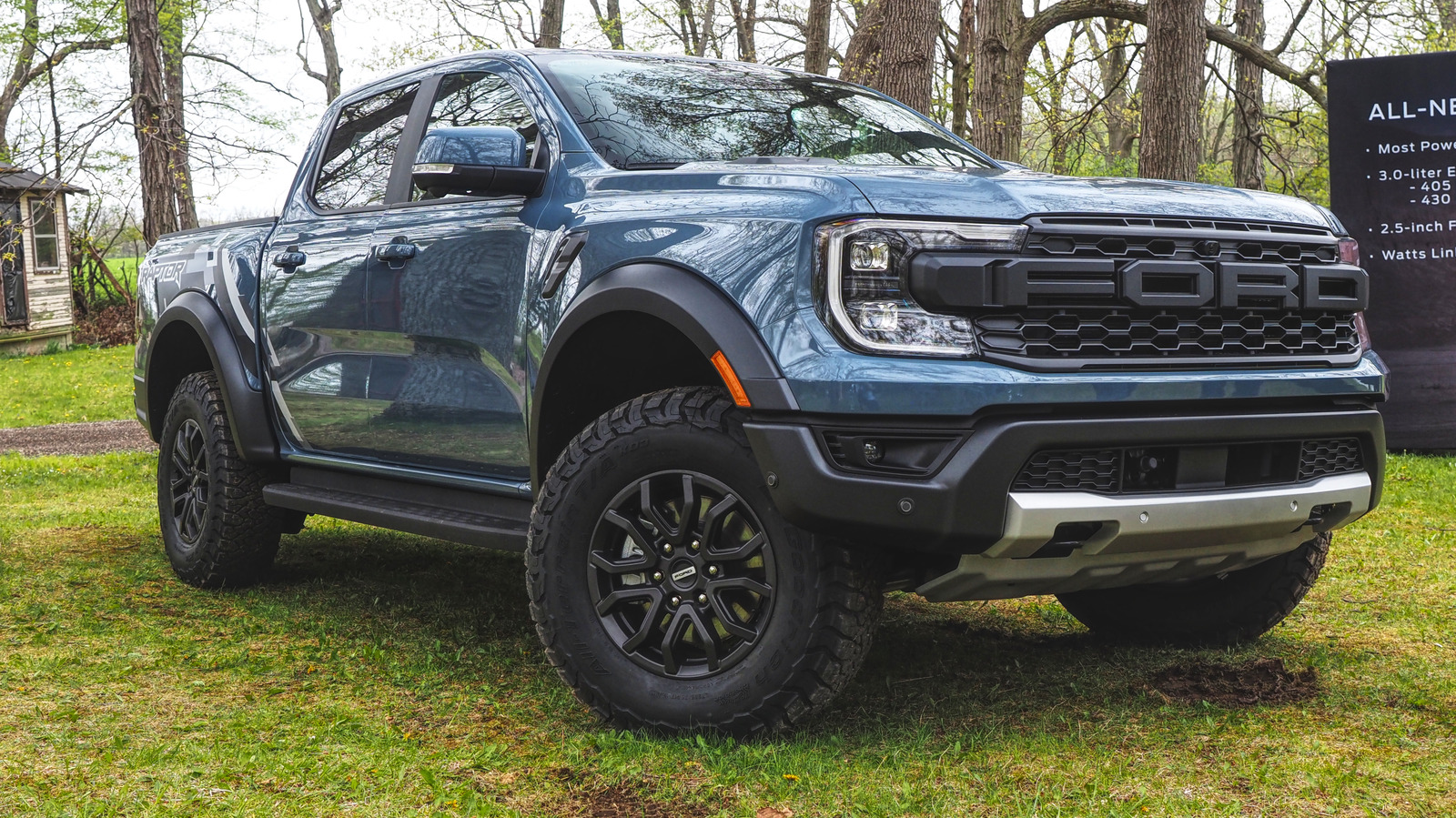
5. **Ford F-150 Hybrid: Tech Trouble in a Workhorse**
The Ford F-150, a perennial best-seller, has long been revered as a dependable American workhorse, synonymous with utility and rugged reliability. The introduction of its hybrid variant represented a bold attempt to merge this traditional utility with cutting-edge innovation, promising improved fuel economy without sacrificing power or capability. However, the execution of this ambitious vision has unfortunately left many owners grappling with significant frustrations and unexpected complications.
The hybrid powertrain, the very heart of this innovative truck, has been plagued by a series of mechanical failures. A particularly concerning issue involves the generator system, which has proven to be a recurring problem area. These failures not only compromise the vehicle’s efficiency but also raise serious questions about its long-term durability and the robustness of its advanced components. Owners expecting a seamless integration of new technology have instead encountered a surprising lack of dependability.
Even more alarming, some drivers have experienced complete system shutdowns while operating their F-150 Hybrid, a critical safety and reliability concern that necessitates immediate dealership intervention. Such incidents underscore the inherent risks when complex technology outpaces the development of robust, proven durability. These unforeseen complications transform the promise of a high-tech, fuel-efficient truck into a source of anxiety and inconvenience, often leading to extended periods of downtime.
While the concept of a fuel-efficient, technologically advanced truck was undeniably attractive, the real-world reliability of the F-150 Hybrid has yet to consistently match the sterling legacy of its traditional, gasoline-powered counterparts. Owners who invested in this forward-thinking version of the classic truck found themselves dealing with unexpected mechanical headaches. It is a clear case where ambitious technology has outpaced durability, causing many to regret opting for the hybrid, wishing they had stuck with the proven conventional model.
Car Model Information: 2018 Ford F-150 XLT
Name: Ford F-Series
Caption: 2022 Ford F-150 Lariat Luxury
Manufacturer: Ford Motor Company
Aka: Ford Lobo (Mexico, 1992–present)
Production: 1948–present
Class: Pickup truck#Full-size pickup truck
Layout: Front-engine, rear-wheel-drive layout,rear-wheel drive
Predecessor: 1941 Ford
Categories: All-wheel-drive vehicles, All Wikipedia articles written in American English, All articles that may contain original research, All articles with unsourced statements, Articles that may contain original research from September 2020
Summary: The Ford F-Series is a series of light-duty trucks marketed and manufactured by the Ford Motor Company since model year 1948 as a range of full-sized pickup trucks — positioned between Ford’s Ranger and Super Duty pickup trucks. Alongside the F-150 (introduced in 1975), the F-Series also includes the Super Duty series (introduced in 1999), which includes the heavier-duty F-250 through F-450 pickups, F-450/F-550 chassis cabs, and F-600/F-650/F-750 Class 6–8 commercial trucks.
Get more information about: Ford F-Series
Buying a high-performing used car >>>
Brand: Ford Model: F-150
Price: $22,345 Mileage: 70,866 mi.
Read more about: Decoding the Duds: 14 New Cars to Skip This Year, From Transmission Troubles to Infotainment Nightmares
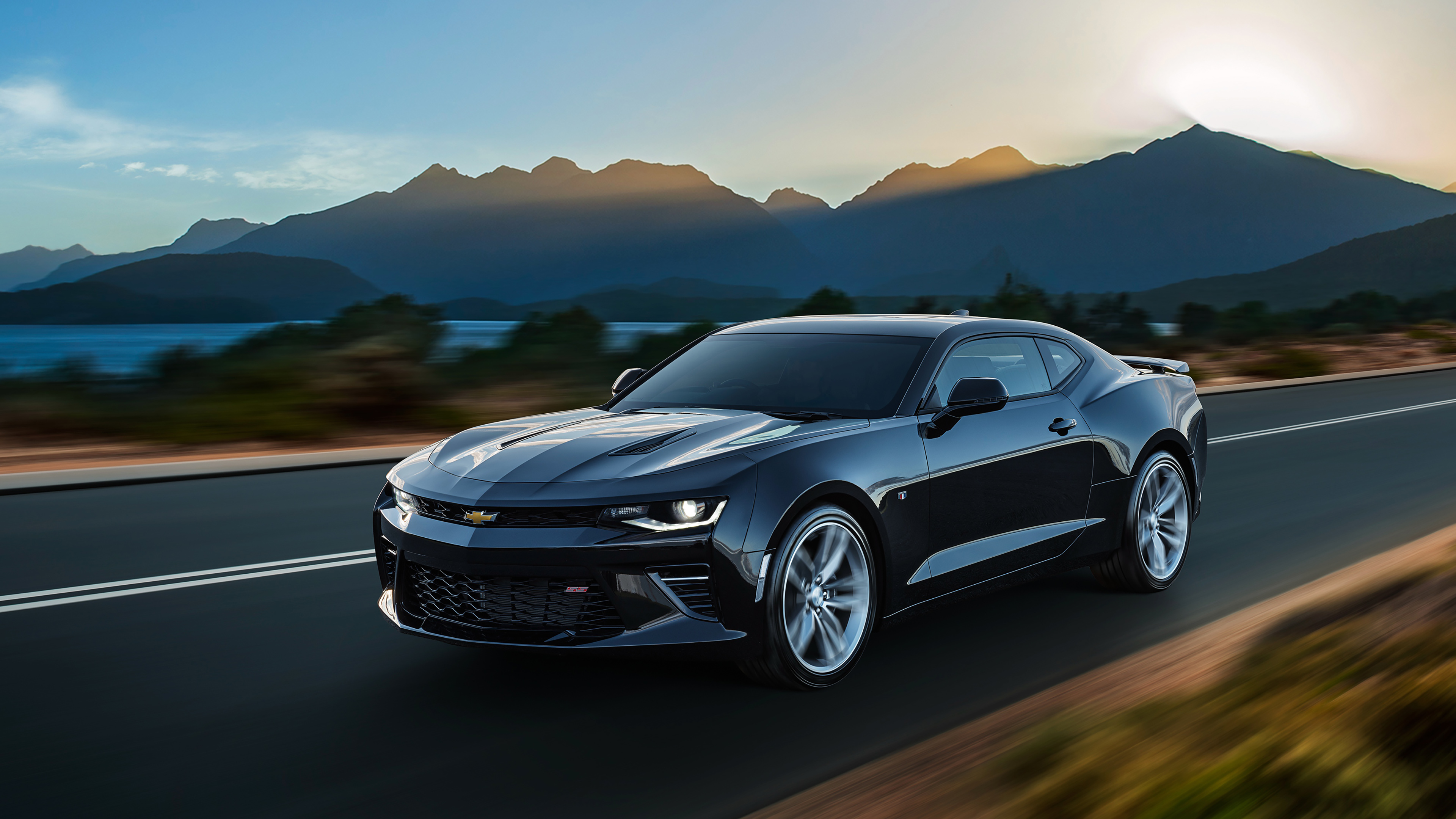
6. **Chevrolet Bolt: Battery Fires and Reliability Nightmares**
The Chevrolet Bolt entered the electric vehicle market with considerable fanfare, largely praised for its compelling combination of affordability and a respectable electric range. These factors promised to make EV ownership accessible to a broader audience. However, initial positive reception quickly gave way to widespread concern and notorious problems that have cast a long shadow over the vehicle’s reputation, most notably concerning its battery technology.
The most infamous issue associated with the Bolt is a series of battery-related fires, which led to significant and costly recalls in both 2020 and 2021. The root of this critical problem was traced back to lithium-ion battery cells manufactured by LG, which were prone to short-circuiting, overheating, and ultimately igniting into flames. This severe safety hazard created a climate of fear and uncertainty, necessitating extensive and disruptive remedial actions, including battery pack replacements.
Beyond the severe battery fire risks, the Bolt also faced criticism for other aspects of its ownership experience. Its ride quality was often described as merely “so-so,” failing to provide the comfort or refinement expected even in its price bracket. Space for rear passengers was often deemed inadequate, making longer journeys uncomfortable. Furthermore, the vehicle’s handling characteristics were also considered unremarkable, contributing to an overall driving experience that lacked distinction and excitement.
These issues collectively paint a picture of a vehicle that, despite its initial promise of affordable EV transport, ultimately disappointed on multiple fronts. The persistent and dangerous battery problems, combined with a mediocre driving experience, have led many Chevrolet Bolt owners to deeply regret their purchase. What began as an exciting step into electric mobility quickly became a frustrating and potentially hazardous ordeal, solidifying its place as a car many would eagerly “unbuy.”
Car Model Information: 2018 Chevrolet Bolt EV LT
Name: Chevrolet Bolt EV
Caption: 2022 Chevrolet Bolt EV
Manufacturer: General Motors
Production: unbulleted list
ModelYears: unbulleted list
Class: Subcompact car
BodyStyle: hatchback
Layout: Front-engine, front-wheel-drive layout
Predecessor: Chevrolet Spark EV
Categories: 2020s cars, All Wikipedia articles in need of updating, All articles containing potentially dated statements, All articles with unsourced statements, Articles containing potentially dated statements from February 2018
Summary: The Chevrolet Bolt EV (marketed in Europe as Opel Ampera-e) is a battery electric subcompact hatchback manufactured and marketed by General Motors under its Chevrolet brand from late 2016 until late 2023, with a brief hiatus between mid-2021 and early 2022.
The first-generation Bolt was developed and manufactured with LG Corporation. Sales of the 2017 Bolt began in California in December 2016; it was released nationwide and international markets release in 2017. A rebadged European variant was marketed as the Opel Ampera-e in mainland Europe. In 2017, the Bolt was the second-best-selling plug-in car in the United States. It was named the 2017 Motor Trend Car of the Year, the 2017 North American Car of the Year, an Automobile magazine 2017 All Star, and was listed in Time magazine’s Best 25 Inventions of 2016. The Ampera-e was discontinued after 2018. By the end of 2020, GM had sold 112,000 Bolt and Ampera-e cars worldwide. The first-generation Bolt had been subject to at least three recalls due to battery fire risks.
In mid-2023, GM officials said they would discontinue the Bolt; after outcry, they announced plans for a next-generation model, which is expected to be revealed in 2025 for model year 2026.
Get more information about: Chevrolet Bolt
Buying a high-performing used car >>>
Brand: Chevrolet Model: Bolt
Price: $12,441 Mileage: 55,107 mi.
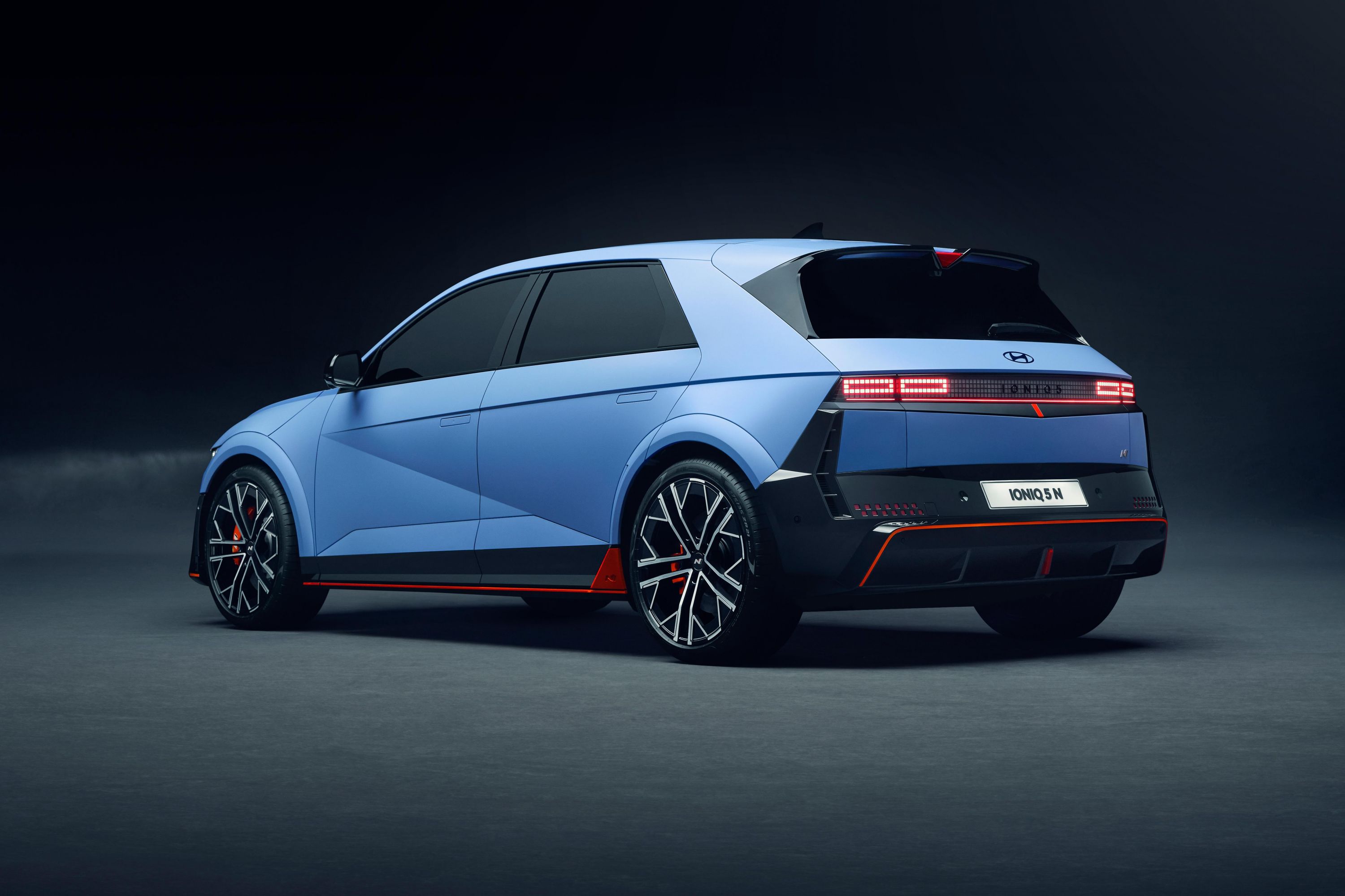
7. **Hyundai Kona Electric: EV Dreams Turned Sour**
Hyundai has, in recent years, earned considerable praise for its innovative and well-received electric vehicles, pushing boundaries in design and technology. However, even successful automakers have their missteps, and the Hyundai Kona Electric stands out as one such “clunker” in their otherwise commendable lineup. Unfortunately, like its Chevrolet counterpart, the Kona Electric’s history is marred by serious battery-related issues and subsequent recalls.
Battery fires became a significant and alarming problem for the Kona Electric, prompting Hyundai to issue worldwide recalls in both 2020 and 2021. These recalls were a critical effort to address and mitigate the fire risks by replacing faulty battery packs in affected vehicles. The widespread nature of these issues not only created a logistical nightmare for the manufacturer but also eroded consumer trust in the vehicle’s safety and reliability, turning a promising EV into a source of considerable anxiety.
While the battery problems were undoubtedly the most prominent and severe, the context suggests these were “just the tip of the iceberg” when it came to the Kona Electric’s shortcomings. Although specific additional issues are not detailed beyond the battery concerns, the implication is clear: there were other underlying problems contributing to buyer dissatisfaction. This suggests that the vehicle, despite its modern electric powertrain, struggled with broader reliability or quality control challenges.
The combination of significant safety recalls due to battery fires and the hint of other unresolved problems made the Hyundai Kona Electric a problematic choice for many. Buyers who ventured into EV ownership with the Kona Electric often found themselves facing unforeseen challenges and considerable inconvenience. For these owners, the dream of eco-friendly, efficient driving quickly turned into a sour experience, making it a prime candidate for a vehicle they would decidedly “unbuy” given the chance.
Car Model Information: 2024 RAM 2500 Big Horn
Name: Hyundai Kona
Caption: Hyundai Kona N Line (SX2)
Manufacturer: Hyundai Motor Company
Aka: Hyundai Kauai (Portugal)
Production: 2017–present
ModelYears: 2018–present
Class: Subcompact crossover SUV
BodyStyle: SUV
Layout: ubl
Categories: 2020s cars, All-wheel-drive vehicles, All Wikipedia articles in need of updating, All Wikipedia articles written in British English, Articles containing Chinese-language text
Summary: The Hyundai Kona (Korean: 현대 코나) is a subcompact crossover SUV produced by the South Korean manufacturer Hyundai. The first-generation Kona debuted in June 2017 and the production version was revealed later that year. It is positioned between the Venue or Bayon and the Tucson in Hyundai crossover SUV line-up. The battery electric version called the Kona Electric (or Kona EV) was first launched in South Korea during the first half of 2018 and rolled out gradually worldwide afterwards.
Get more information about: Hyundai Kona
Buying a high-performing used car >>>
Brand: Hyundai Model: Kona Electric
Price: $46,895 Mileage: 37,555 mi.

8. **Jeep Compass: A Compact SUV’s Compounding Issues**
The Jeep Compass, a compact SUV, might present an attractive option with its distinctive styling and brand association. However, a closer look at owner feedback reveals a vehicle riddled with serious issues across various model years, making it a source of significant frustration for many who hoped for a dependable daily driver.
One of the most frequently cited problems centers around its transmission systems. Both the continuously variable transmission (CVT) and the 9-speed automatic transmissions have been reported to experience ‘herky-jerky shifting and catastrophic failure.’ Such fundamental mechanical flaws severely impact the vehicle’s drivability and long-term reliability, leading to costly and unexpected repairs.
Beyond transmission woes, the Compass also struggles with other critical components. Owners frequently report ‘poor engine performance, excessive oil consumption, and electrical system issues.’ These problems combine to create a less-than-stellar ownership experience, diminishing any initial appeal and leading to persistent headaches. Considering its numerous drawbacks, many automotive experts would advise potential buyers to ‘steer clear of this SUV,’ labeling it a ‘migraine headache on wheels.’
Car Model Information: 2024 Jeep Compass Trailhawk
Name: Jeep Compass
Caption: 2019 Jeep Compass
Manufacturer: Jeep
Production: 2006–present
ModelYears: 2007–present
Class: Compact crossover SUV
BodyStyle: SUV
Layout: Front-engine, front-wheel-drive layout
Chassis: Unibody
Categories: 2010s cars, 2020s cars, All-wheel-drive vehicles, All Wikipedia articles written in American English, Articles with short description
Summary: The Jeep Compass is a compact crossover SUV, introduced in 2006 for the 2007 model year. The first generation Compass and Patriot, its rebadged variant, were among Jeep’s first crossover SUVs. The second-generation Compass debuted in September 2016 in Brazil and at the Los Angeles International Auto Show in November 2016, sharing a modified platform with the Renegade. It is positioned between the smaller Renegade and the larger Cherokee globally or the Commander in South America. The third-generation Compass debuted in May 2025, built on the STLA Medium by Stellantis, shared with other PSA Groupe vehicles.
Get more information about: Jeep Compass
Buying a high-performing used car >>>
Brand: Jeep Model: Compass
Price: $26,990 Mileage: 29,270 mi.

9. **Dodge Dart: A Compact Sedan with Full-Size Problems**
The Dodge Dart, introduced as a compact sedan, aimed to offer a sporty and affordable option in its segment. Yet, for countless owners, the experience has been anything but positive, as the vehicle quickly revealed itself to be a compact car with a disproportionate number of ‘full-size car problems.’
This sedan has garnered widespread dissatisfaction across nearly every major component, from its powertrain to its foundational systems. Critical complaints range ‘from the transmission to the engine and from the suspension to the brakes,’ painting a picture of a vehicle with systemic flaws. These issues often begin manifesting early in the ownership cycle, quickly dampening the initial excitement of a new purchase.
Such pervasive problems have resulted in significant buyer’s remorse. According to insights from Consumer Reports, a sobering ‘around six in 10 buyers say they are not satisfied with the vehicle.’ This high rate of dissatisfaction underscores the Dart’s failure to deliver on fundamental expectations of reliability and performance, leaving many wishing they had never made the purchase.
Car Model Information: 2015 Dodge Dart SXT
Name: Dodge Dart
Caption: 1966 Dodge Dart GT 2-door hardtop
Manufacturer: Dodge
Production: 1959–1976 (US market)
ModelYears: 1960–1976 (US market)
Class: Full-size
Layout: FR layout
Predecessor: Dodge Coronet#Fourth generation (1957–1959)
Related: Plymouth Valiant,Chrysler Valiant,Dodge Phoenix
Successor: Dodge Aspen,Dodge Diplomat,Talbot Tagora
Categories: 1970s cars, All articles with unsourced statements, Articles with short description, Articles with unsourced statements from December 2023, Articles with unsourced statements from May 2025
Summary: The Dodge Dart is a line of passenger cars produced by Dodge from the 1959 to 1976 model years in North America, with production extended to later years in various other markets.
The production Dodge Dart was introduced as a lower-priced full-size model in 1960 and 1961, but became a mid-size car for one model year for 1962, and was then reduced to a compact for two generations, from 1963 to 1976.
Chrysler had first used ‘Dart’ name plates on two Italian styled show cars, in 1956 and 1957, before it became a Dodge model name. The Dart nameplate was resurrected for a Fiat-derived compact car that was introduced in 2012.
Get more information about: Dodge Dart
Buying a high-performing used car >>>
Brand: Dodge Model: Dart
Price: $9,995 Mileage: 143,082 mi.
Read more about: America’s Automotive Hall of Shame: Unforgettable Engineering Blunders and the Cars We Love to Lament

10. **Dodge Grand Caravan: Family Hauler, Reliability Headaches**
The Dodge Grand Caravan holds a nostalgic place for many families, having served as a primary ‘family, pet, and thing hauler’ for generations. However, despite its utility and spaciousness, the reality of ownership for many has been far from smooth, particularly when it comes to long-term reliability and mechanical integrity.
A predominant issue plaguing this minivan is its transmission, with ‘transmission failure’ being a ‘common complaint from owners.’ Even before outright failure, drivers frequently experience concerning symptoms such as ‘delayed gear engagement, rough shifting, and slipping.’ These problems directly compromise the vehicle’s safety and reliability, making it an unreliable choice for routine family transportation.
Adding to the list of woes, many owners also ‘complain about electrical system problems and heavy oil consumption.’ These issues contribute to an accumulation of repair costs and inconvenience, transforming what should be a practical family vehicle into a source of constant stress and financial drain. Given the persistent mechanical and electrical faults, it’s clear why many owners, if they ‘could rewind time and have a do-over, they would gladly choose something else.’
Car Model Information: 2024 RAM 2500 Big Horn
Caption: 2011 Dodge Grand Caravan Mainstreet
Name: Dodge Grand Caravan
Manufacturer: Chrysler Corporation,Daimler AG,Chrysler LLC,Chrysler Group LLC,FCA US LLC
Class: Minivan
Layout: FF layout,F4 layout
Production: November 2, 1983 –August 21, 2020
ModelYears: 1984–2020
Related: Plymouth Voyager,Chrysler Town & Country (minivan),Dodge Mini Ram,Chrysler Voyager,Volkswagen Routan
Assembly: Windsor, Ontario,Fenton, Missouri,Fenton, Missouri,Fuzhou
Successor: Dodge Journey,Chrysler Voyager
Categories: All-wheel-drive vehicles, All articles with unsourced statements, Articles with short description, Articles with unsourced statements from December 2017, Articles with unsourced statements from May 2009
Summary: The Dodge Caravan is a series of minivans manufactured by Chrysler from the 1984 through 2020 model years. The Dodge version of the Chrysler minivans, was marketed as both a passenger van and a cargo van (the only version of the model line offered in the latter configuration). For 1987, the model line was joined by the long-wheelbase Dodge Grand Caravan. Produced in five generations across 36 model years, the Dodge Caravan is the second longest-lived Dodge nameplate (exceeded only by the Dodge Charger). Initially marketed as the Dodge counterpart of the Plymouth Voyager, the Caravan was later slotted between the Voyager and the Chrysler Town & Country. Following the demise of Plymouth, the model line became the lowest-price Chrysler minivan, ultimately slotted below the Chrysler Pacifica.
Sold primarily in the United States and Canada, the Dodge Caravan was also marketed in Europe and other international markets under the Chrysler brand (as the Chrysler Voyager or Chrysler Caravan). From 2008 onward, Dodge marketed the model line only as the Grand Caravan; Ram Trucks sold a cargo-only version of the model line as the Ram C/V Tradesman. The model line was also rebranded as the Volkswagen Routan from 2009 through 2014.
After the 2020 model year, the Dodge Grand Caravan was discontinued, ending production on August 21, 2020. For 2021 production, the Grand Caravan nameplate was moved to Chrysler, which used it for a Canadian-market version of the Chrysler Pacifica (in the United States, the exact vehicle was marketed as the Chrysler Voyager).
For its entire production run, the Dodge Caravan/Grand Caravan was manufactured by Chrysler Canada (now Stellantis Canada) at its Windsor Assembly facility (Windsor, Ontario). From 1987 until 2007, the model line was also manufactured by Chrysler at its Saint Louis Assembly facility (Fenton, Missouri). Since their introduction in late 1983, over 14.6 million Chrysler minivans have been sold worldwide (including export versions and versions sold through rebranding).
Get more information about: Dodge Caravan
Buying a high-performing used car >>>
Brand: Dodge Model: Grand Caravan
Price: $46,895 Mileage: 37,555 mi.
Read more about: Regret in Every Lane: 12 Rides Drivers Admit They’d “Unbuy” in a Flash, Ranked by Real-World Woes
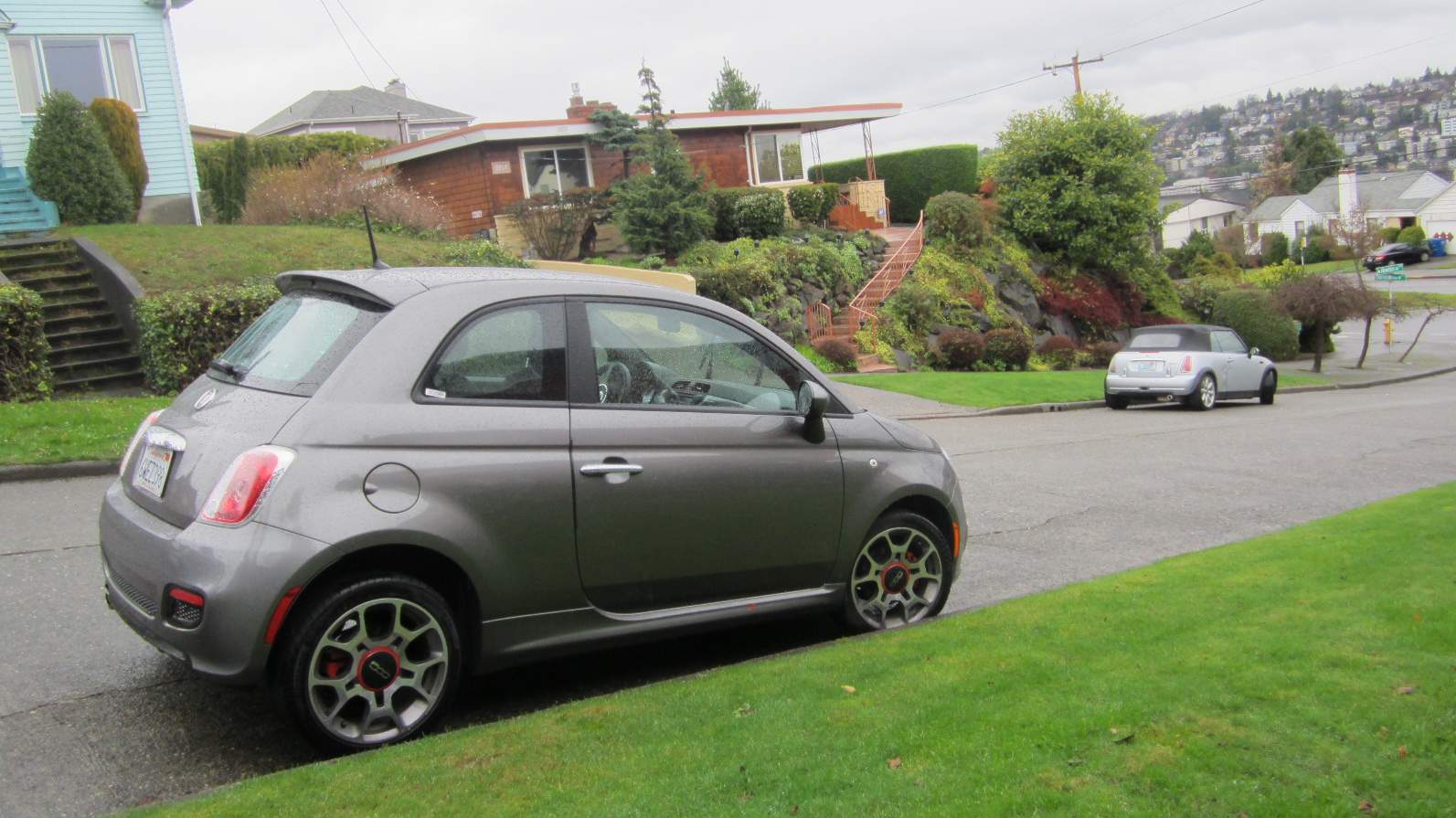
11. **Nissan Sentra: The CVT Controversy Continues**
The Nissan Sentra, a popular compact sedan, has seen various model years with varying degrees of success. However, for those produced between ‘2013 to 2019,’ the ownership experience has frequently been described as ‘horrific,’ primarily due to a problematic component that has become synonymous with Nissan’s recent history.
At the heart of the Sentra’s widespread issues lies the ‘infamous CVT (Continuously Variable Transmission).’ This transmission has been ‘a thorn in the side of many Sentra owners,’ with common complaints including ‘overheating, jerky acceleration, and shuddering.’ These symptoms directly impact driving comfort and confidence, often requiring expensive repairs or even full transmission replacements.
Beyond the transmission, the Sentra also faces other significant reliability challenges. Owners have reported ‘engine stalling,’ a serious safety concern that can occur unexpectedly. Furthermore, the vehicle has been subject to ‘many recalls related to the vehicle’s airbags, seatbelts, brakes, and more,’ indicating broader quality control issues that detract from its overall appeal and trustworthiness.
Car Model Information: 2023 Nissan Sentra SV
Name: Nissan Sentra
Caption: 2021 Nissan Sentra SR (B18; Canada)
Manufacturer: Nissan
Aka: Nissan Sunny
Production: 1982–present
Class: Subcompact car
Predecessor: Nissan Sunny#B310
Categories: 1990s cars, 2000s cars, 2010s cars, 2020s cars, All Wikipedia articles written in American English
Summary: The Nissan Sentra is a series of automobiles manufactured by the Japanese automaker Nissan since 1982. Since 1999, the Sentra has been categorized as a compact car, while previously it occupied the subcompact class. Until 2006, Sentra was a rebadged export version of the Japanese Nissan Sunny, but since the 2013 model year, Sentra is a rebadged export version of the Sylphy. The Sentra nameplate is not used in Japan. Many other countries in Latin America sell their versions of the Sunny as the Sentra. In Mexico, the first three generations of the Sentra were known as the Nissan Tsuru (Japanese for crane), and the B13 model was sold under that name until 2017, alongside the updated models badged as Sentra.
In North America, the Sentra currently serves as Nissan’s compact car, despite being rated as a mid-size car by the EPA due to its interior volume since the 2007 model year. While previous Sentras were subcompacts, the Sentra has grown over the years, with the Nissan Versa having replaced the Sentra in the entry-level area.
The Sentra name was created for Nissan by Ira Bachrach of NameLab, and Bachrach describes the origin as “Nissan wanted consumers to understand that it was quite safe even though it was small. The word Sentra sounds like central as well as sentry, which evokes images of safety.”
Get more information about: Nissan Sentra
Buying a high-performing used car >>>
Brand: Nissan Model: Sentra
Price: $19,990 Mileage: 30,449 mi.
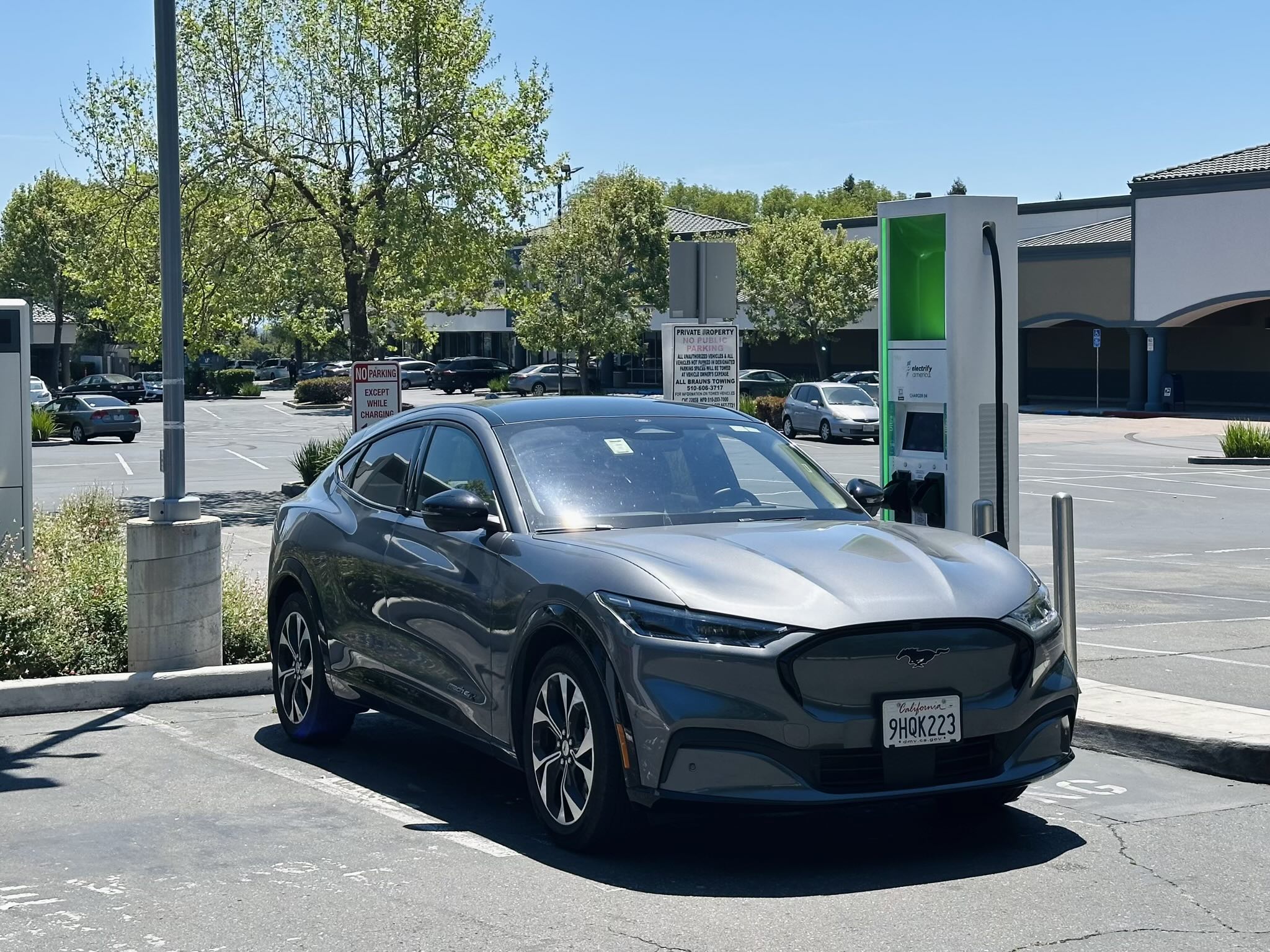
12. **Chrysler 200: A Short-Lived Sedan’s Long List of Problems**
Produced for a relatively short run from ‘2011 to 2017,’ the Chrysler 200 was intended to be a competitive offering in the midsize sedan market. Yet, its tenure was marked by a persistent array of ‘reliability issues’ that ultimately led to its discontinuation and a legacy of owner dissatisfaction.
A significant source of trouble for the Chrysler 200 was its transmission, particularly the ‘9-speed automatic tranny’ found in the ‘2015, 2016, and 2017 models,’ which proved ‘to be especially problematic.’ Owners frequently reported issues that ranged from erratic shifting to outright ‘transmission failure,’ undermining the vehicle’s core functionality and necessitating costly interventions.
Compounding these transmission woes were ‘engine performance problems,’ which further contributed to a suboptimal driving experience. These issues collectively meant that the Chrysler 200 often failed to deliver the smooth, reliable, and efficient performance expected from a modern sedan, leaving many owners with a sense of regret and the burden of unexpected repairs.
Car Model Information: 2013 Chrysler 200 Touring
Name: Chrysler 200
Manufacturer: Chrysler
Production: 2010–2016
ModelYears: 2011–2017
Assembly: Sterling Heights, Michigan
Class: Mid-size car
Sp: us
Predecessor: Chrysler Sebring
Categories: 2010s cars, All articles with dead external links, All articles with unsourced statements, Articles with dead external links from July 2020, Articles with permanently dead external links
Summary: The Chrysler 200 is a mid-size sedan that was manufactured and marketed by Chrysler from model years 2011 to 2017 across two generations in four-door sedan and two-door convertible (first generation only) body styles.
The 200 nameplate debuted on the 200C, a prototype hybrid vehicle shown at the 2009 North American International Auto Show in Detroit and based on the Chrysler 300. The 200C concept was engineered to accept either traditional gasoline, hybrid or full-electric powertrains.
Get more information about: Chrysler 200
Buying a high-performing used car >>>
Brand: Chrysler Model: 200
Price: $7,995 Mileage: 117,030 mi.

13. **Nissan Altima: More CVT Headaches and Other Flaws**
Another vehicle frequently mentioned by owners who ‘wish they had never purchased’ it is the Nissan Altima. Like several other Nissan models from certain periods, the Altima’s reputation has been significantly tarnished by a critical mechanical component and other persistent reliability concerns.
The primary culprit behind much of the Altima’s owner frustration is its ‘problematic transmission,’ the Continuously Variable Transmission (CVT). The ‘worst issues’ of this transmission were notably prevalent in the ‘2013 to 2019 model years,’ manifesting as inconsistent power delivery, droning noises, and a general lack of durability that often led to expensive repairs.
Beyond the well-documented CVT troubles, the Nissan Altima also presents owners with a range of other significant problems. These include ‘steering, excessive oil consumption, and oil leaks.’ Such a combination of mechanical and structural flaws means that even basic maintenance can become a financial burden, making the Altima a questionable long-term investment for many drivers.
Car Model Information: 2023 Nissan Altima SR FWD
Name: Nissan Altima
Caption: 2024 Nissan Altima SR (L34; US)
Manufacturer: Nissan
Aka: Nissan Bluebird
Production: 1992–present
Class: Compact car
Predecessor: Nissan Bluebird,Nissan Stanza
ModelYears: 1993–present
Categories: 2000s cars, 2010s cars, 2020s cars, All-wheel-drive vehicles, All Wikipedia articles written in American English
Summary: The Nissan Altima is a mid-size car manufactured by Nissan since 1992. It is a continuation of the Nissan Bluebird line, which began in 1955.
The Altima has historically been larger, more powerful, and more luxurious than the Nissan Sentra but less so than the Nissan Maxima. The first through fourth-generation cars were manufactured exclusively in the United States and officially sold in North and South America, along with the Middle East and Australia. For other markets, Nissan sold a related mid-size sedan called the Nissan Teana which was between the Altima and Maxima in terms of size. In 2013, the Teana became a rebadged version of the fifth-generation Altima.
The name “Altima” was originally applied to a top trim line of the Nissan Leopard for the Japanese market in 1986, and then to the Nissan Laurel Altima mid-size car sold in Central America and the Caribbean before 1992. In 1992, Nissan discontinued the Stanza which was a Nissan Bluebird clone, replacing it with the US-built Altima, while remaining a compact car. The first Altima was produced in June 1992, as a 1993 model. All Altima models for the North American market were built in Smyrna, Tennessee, until June 2004, when Nissan’s Canton, Mississippi plant also began producing the model to meet high demand.
Get more information about: Nissan Altima
Buying a high-performing used car >>>
Brand: Nissan Model: Altima
Price: $22,999 Mileage: 26,088 mi.
Read more about: Steer Clear: The 12 Most Unreliable Cars of the Last Decade & Today, According to Experts
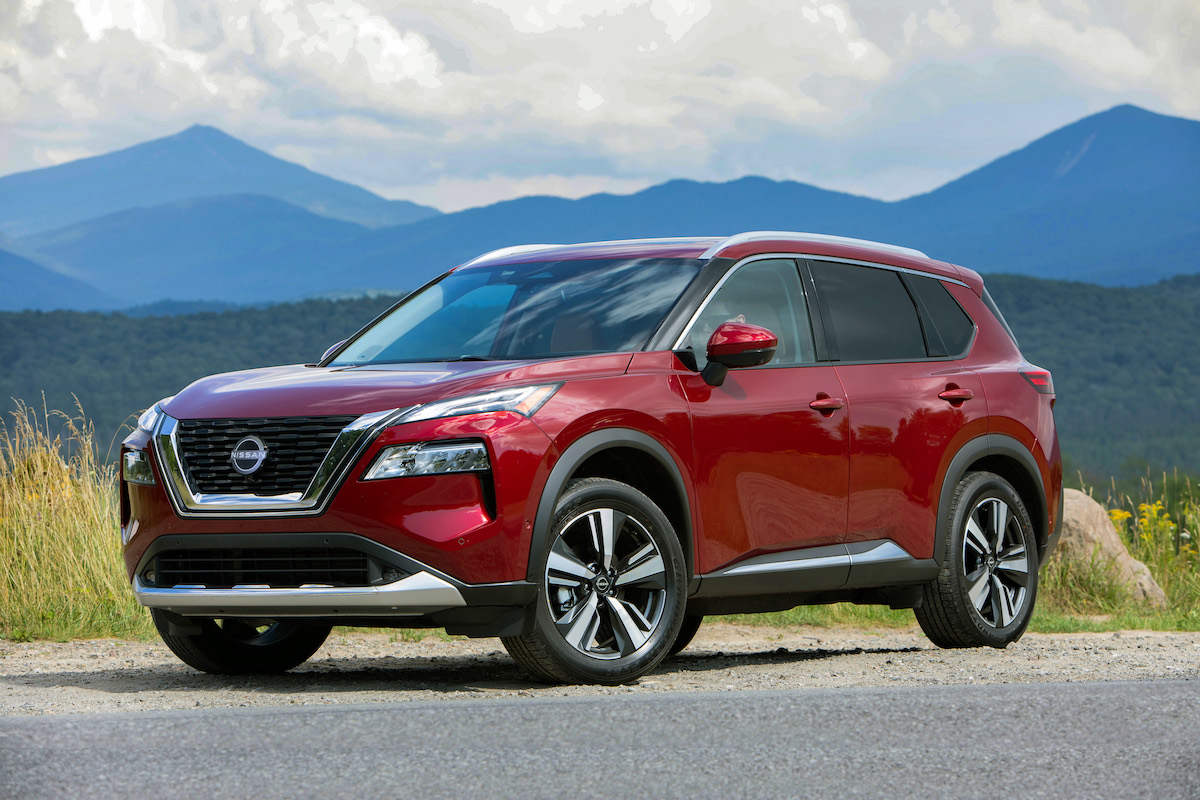
14. **Nissan Versa Note: The Pitfalls of ‘Super-Cheap’ Driving**
The Nissan Versa Note positioned itself as a highly affordable small hatchback, appealing to budget-conscious buyers looking for economical transport. While its low price point was certainly a draw, many owners quickly discovered that this perceived value came with significant compromises, ultimately ‘mirroring the quality level’ in disappointing ways.
Foremost among the frustrations experienced by ‘Nissan Versa Note owners’ was, once again, the vehicle’s ‘transmission — a CVT.’ This transmission system often failed to deliver a smooth or responsive driving experience, contributing to a sense of exasperation and dissatisfaction on a daily basis. The technology intended for efficiency often hindered the driving pleasure.
Adding to the underwhelming experience was the vehicle’s ‘anemic acceleration from the 1.6-liter 4-cylinder engine.’ This lack of power meant that merging onto highways or performing overtakes could be a nerve-wracking affair, further reinforcing the notion that the low purchase price did not translate into a satisfying or confident driving experience. For many, the initial savings quickly evaporated into a feeling of regret over the vehicle’s overall quality and performance.
Car Model Information: 2024 RAM 2500 Big Horn
Categories: All set index articles, Articles with short description, CS1 Mexican Spanish-language sources (es-mx), CS1 Portuguese-language sources (pt), CS1 Spanish-language sources (es)
Summary: Nissan Versa is an automobile nameplate used by the Japanese manufacturer Nissan in the Americas for the following models:
According to a Nissan press release in 2008, “versa” is short for “versatile space” meant to imply the spaciousness of the interior and configurable cargo arrangements.
Get more information about: Nissan Versa
Buying a high-performing used car >>>
Brand: Nissan Model: Versa Note
Price: $46,895 Mileage: 37,555 mi.

15. **Hyundai Veloster: Style Over Substance for Some**
The Hyundai Veloster certainly stood out with its ‘cool-looking car with distinctive styling, three doors, and responsive handling,’ offering a unique proposition in the compact car segment. However, beneath its eye-catching exterior and initial driving appeal, a host of underlying problems proved ‘hard to ignore’ for many owners.
A significant concern revolves around the Veloster’s ‘engine issues,’ which in some unfortunate cases, ‘can lead to catastrophic failure.’ This is a critical reliability flaw that can result in immense financial strain and a complete loss of confidence in the vehicle’s long-term viability, overshadowing any design merits it might possess.
The vehicle’s ‘dual-clutch transmission’ also became a common source of complaint, exhibiting issues such as ‘delayed acceleration, slipping, and jerky shifts.’ These transmission quirks detract significantly from the driving experience, making it less smooth and predictable than desired. Furthermore, ‘suspension and steering problems’ add to the mechanical headaches, collectively eroding owner satisfaction.
Car Model Information: 2013 Hyundai Veloster Base
Name: Hyundai Veloster
Manufacturer: Hyundai Motor Company
Production: 2011–2022
Class: Sport compact car
Layout: Front-engine, front-wheel-drive layout
BodyStyle: hatchback
Predecessor: Hyundai Tiburon
ModelYears: 2012–2022
Assembly: Ulsan
Categories: All Wikipedia articles in need of updating, All articles with unsourced statements, Articles containing Korean-language text, Articles with short description, Articles with unsourced statements from May 2018
Summary: The Hyundai Veloster (Korean: 현대 벨로스터, romanized: Hyeondae Belloseuteo) is a compact car first produced in 2011 by Hyundai, with sales beginning in South Korea on March 10, 2011, and in Canada and the United States since the fall of 2011. In South Korea, it was marketed under Hyundai’s ‘Premium Youth Lab’. It was unveiled on January 10, 2011, at the Detroit Auto Show, and fills the void left when Hyundai discontinued the Hyundai Tiburon after the 2008 model year.
The car differs from most other hatchbacks with its asymmetrical door configuration, featuring one large door on the driver side and two smaller doors on the passenger side. This configuration is more common on commercial vehicles and minivans.
Get more information about: Hyundai Veloster
Buying a high-performing used car >>>
Brand: Hyundai Model: Veloster
Price: $9,991 Mileage: 73,577 mi.
In the complex landscape of automotive choices, the journey from excitement at purchase to the sting of buyer’s remorse is one that many drivers unfortunately experience. As this in-depth look has underscored, a vehicle’s initial appeal—whether it’s an iconic nameplate, a luxurious badge, or an attractive price—can often mask a deeper reality of mechanical flaws, persistent reliability issues, or simply a failure to deliver on fundamental promises of efficiency and performance. These 15 vehicles serve as potent reminders that due diligence is not just recommended, but essential. Taking the time to research real-world owner experiences, scrutinize reliability ratings, and consider the total cost of ownership beyond the showroom floor can be the difference between a smart investment and a costly lesson learned. In a market where every dollar counts, arming yourself with objective information is the most powerful tool against regretting your next car purchase.

